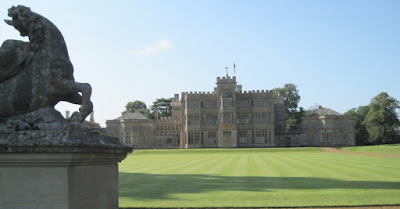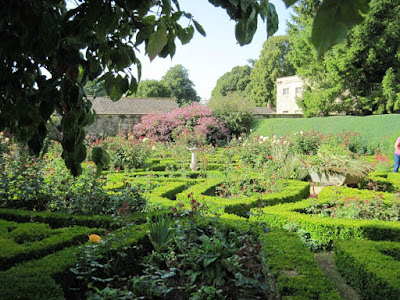The farmer neighbour normally ploughs up the land surrounding us after harvesting the Barley, but this year the lands have been left fallow allowing the geese to come down to feed on spilt seed and graze on young shoots. We usually see the geese come overhead from Findhorn Bay which is about 1 hours drive North West of us. They leave the Bay to forage returning at dusk. They are instantly recognised by their Oinking/Honking calls and facinate us. They migrate from Iceland in September and October and return to breed by April or May the following year. Birds can live up to 18 years.
During this past week we have seen literally thousands of birds decending on the farmland. They are extremely noisy and constantly communicate with each other and often suddenly rise up in flight, before settling again. They don't like human activity and clearly are skittish as they are often shot.
What is abslutely amazing is to hear the wall of sound when they all take to the air. I have found a video clip which demonstrates this. In real life it is even more magnificent.
 Next we have seen another amazing sight. Whooper Swans! About 30 swans in all. They only stayed a few days. These swans are truly massive birds, but fly with grace. they have a 2.5 metre wingspan an weigh about 11 kilograms.They have a whooping call, hence their name. They also breed in Iceland and come to Scotland around October. Only about 4,000 swans overwinter in Scotland and we have never see them this close before. They eat grain, potatoes, grass etc. They often seem to be on the same fields as the geese. The oldest ringed bird lived to 23 years old. These Swans are protected. Just imagine, they have been migrating here for hundreds of thousands of years! Wonderful.
Next we have seen another amazing sight. Whooper Swans! About 30 swans in all. They only stayed a few days. These swans are truly massive birds, but fly with grace. they have a 2.5 metre wingspan an weigh about 11 kilograms.They have a whooping call, hence their name. They also breed in Iceland and come to Scotland around October. Only about 4,000 swans overwinter in Scotland and we have never see them this close before. They eat grain, potatoes, grass etc. They often seem to be on the same fields as the geese. The oldest ringed bird lived to 23 years old. These Swans are protected. Just imagine, they have been migrating here for hundreds of thousands of years! Wonderful.
A video clip is also attached below - just click on the arrow in the middle of the picture to see it.
Click on the arrow in the middle of the picture of the geese to view the video.




























































